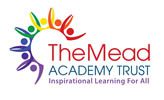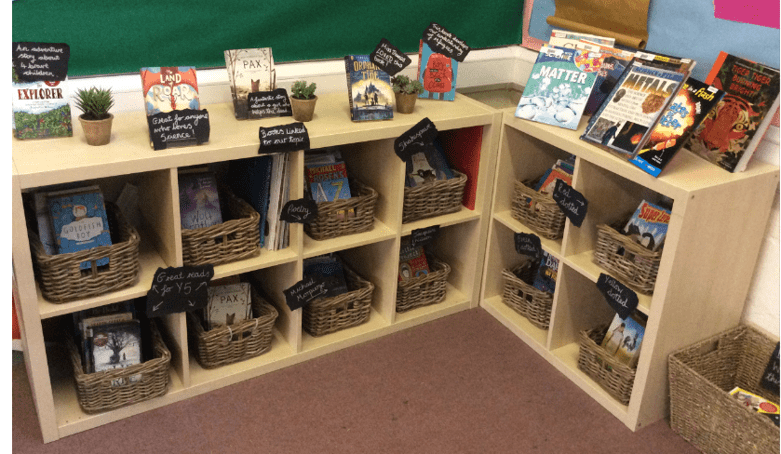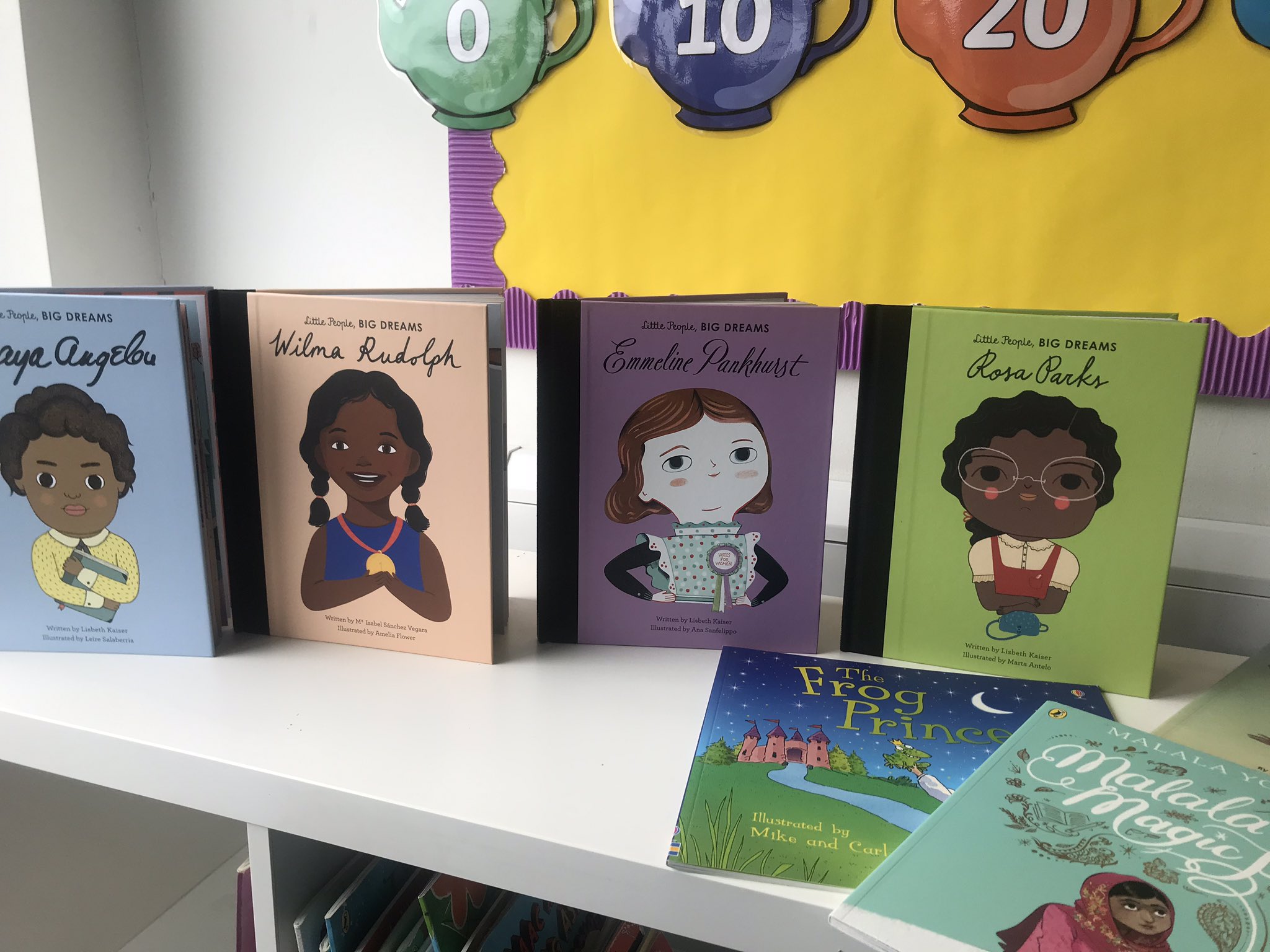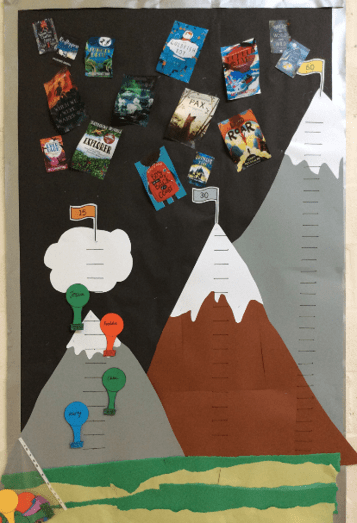The Curriculum: English
English is essential for us all to be able to communicate effectively through the written and spoken word. At the Mead Academy Trust, we strive to develop children who are articulate and imaginative communicators and are well-equipped with the basic skills they need to become motivated lifelong learners. We ensure that children are fluent and enthusiastic readers and confident, creative and skilful writers.
We aim to instil in children a love for books through exposure to high quality texts that reflect and include diverse themes and issues; an appreciation of the creative arts, such as drama and poetry, and an ability to express themselves with confidence and clarity.
Reading
Reading is prioritised. We believe the ability to read is fundamental to pupils’ development as independent learners.
Intent
- To develop confident and independent readers by inspiring a love of literature and an enjoyment of reading for pleasure
- To ensure that all children become enthusiastic and reflective readers through contact with diverse, challenging and enriching texts of a wide variety of genres and text types
- To ensure that children read with confidence, fluency and understanding, using a range of independent strategies to self-monitor and correct mistakes
Good reading skills allow children to access all areas of the curriculum. In order to read across the curriculum with fluency, accuracy, understanding and enjoyment pupils need to use a range of strategies; drawing on knowledge of context and grammatical knowledge, applying phonic knowledge and skills, applying alphabet knowledge and developing word recognition.
When I read great literature, great drama, speeches or sermons, I feel that the human mind has not achieved anything greater than the ability to share feelings and thoughts through language
Whole class reading
“Reading floats on a sea of talk” (Britton, 1970, p. 164)
Daily whole class reading sessions at Key Stage 2 and shared reads at Key Stage 1, allow children of all abilities to be immersed in the same high-quality literature and the discussion that these texts promote. Whole class reading lessons and shared reading focus on developing vocabulary and securing understanding. During these sessions, the teacher models good use of intonation, movement, volume and expression. Through this modelling, echo reading and repeated reads, the children gradually recognise good reading styles from the teachers’ performances and start to emulate the teacher in their own reading. The teacher can also demonstrate how to ‘unpick the text’ to secure understanding – and to answer comprehension questions focusing on the skills outlined in the National Curriculum.
- Teachers use targeted and open-ended questioning
- Teachers model and expect high quality responses from children (linked to Tower hamlets Language structure) with evidence and explanations provided for support
- Follow up tasks provide challenge for all children and support for those who need it through scaffolding, supported pre-reads and repeated reads of a text
Reading independently and at home
Reading at home is paramount to children’s development and parents / carers are encouraged to read daily with their children throughout their time at The Mead Academy Trust. Children working on the ‘Read Write Inc’ programme take home a ‘book bag book’ which is matched directly to their current phonic level. These books are changed weekly to allow children to re-read multiple times to build up fluency and develop early comprehension skills. They also bring home a paper book which is a copy of the book that they have practised in school. This is an opportunity for them to show their families how fluently and confidently they can read these books. Children, from Reception also have the opportunity to choose additional books to share together with their adults at home.
As children progress through school and become fluent readers, they have the opportunity to choose their own home/school books from the book corners and school library. Our chapter books are colour coded to ensure that children are able to select books at an appropriate level.
Reading spine
Teachers read aloud to the children every day beyond their reading lessons; this ensures that children are exposed to a high quality model of fluency: intonation, expression and phrasing. Children become familiar with a variety of stories, poetry and information books, promoting a life-long love of reading. This exposure to high quality text helps the children to learn an increasing range of vocabulary, which also helps with their writing.
We have created a Trust Reading Spine as a reading entitlement for our children – a carefully selected set of books for them to experience and come to know and love. The idea of the spine is to act as the backbone of our reading programme – to help every child build their inner kingdom of stories. The books on our spine list can be found in our classrooms for children to borrow, read and share and many of them take a lead position in our curriculum.
Text-led learning journeys
Our spine books are used as drivers for our wider curriculum. The text-led learning journey model is informed by research evidence and aims to ensure all pupils, particularly the most vulnerable, are engaged – with the book offering the route into authentic enquiries and wider curriculum studies.
We have developed a Trust Poetry Spine to create a shared poetry curriculum for all our learners to experience and enjoy – from Nursery to Year 6. The poems have been selected in order to reflect the work of a wide range of well-known and less familiar writers. The poems vary widely in terms of genre, length, structure, mood and historical period. Some are serious, some light-hearted and even frivolous! Some are children’s classics (though not necessarily written originally for children). A poem is read aloud to every class, every day.
Most of the poems included have been recommended by practising teachers on the basis of their first-hand experience of using them in the classroom. The poems have therefore been ‘tested’ in that they have given pleasure to children (and their teachers) and stimulated enough interest to justify repeated readings and a wide range of follow-up activities.
Phonics
Reading is taught in Early Years and Key Stage 1 using Read Write Inc (RWI). This is a systematic, synthetic phonics programme which helps all children learn to read fluently so they can focus on developing their skills in comprehension, vocabulary and spelling.
The programme is designed for children aged 4 – 7. However, we begin the programme in Nursery and continue teaching RWI to children beyond the age of 7 if they still need support in their reading. Using clear termly tracking and ability grouping, every child learns rapidly at the right level. Read Write Inc strategies are used across the school to build on children’s early reading experiences.
Nursery: From term 5 and when appropriate, children will be introduced to corresponding grapheme pictures and the initial sounds in short five minute sessions. We also prioritise the first stages of oral blending by practicing ‘Fred Games’ from the very start of their Nursery journey.
Reception: In Reception all children will learn to recognise, read and write sounds, spelling corresponding words.
The children:
- Learn 44 sounds using simple picture prompts
- Learn to blend sounds to read using ‘Fred Talk’
- Read from a range of story books and non-fiction books matched to their phonic knowledge to develop accuracy and fluency
- Develop comprehension skills
Years One & Two: Children follow the same format as Reception but continue to develop their phonic knowledge by reading and spelling words with the alternative graphemes. Daily sessions of phonics last for 45 minutes.
Oracy
Learning to Talk: When they leave us, children should be able to explain and justify their ideas, make generalisations, generate hypothesis and offer critical comments.
Learning through Talk: Oracy supports learning. Through debating, discussing and deliberating over ideas children are cognitively stretched and challenged to formulate their own opinions and come to shared decisions. Moreover, it is also fundamental to supporting the development of reading and writing skills.
We teach children to talk and to learn through talk. Opportunities are provided for children to express and develop ideas, engage in discussion and exchange views sensitively, competently and coherently. Through exposure to a variety of activities and situations, children are encouraged to develop the skills to use speech appropriately, being able to adjust ways of speaking according to the occasion, and develop a growing ability to listen attentively.
Language Structures are used to support planning for talk in a range of subjects and lessons across the curriculum. It identifies the language structures needed to acquire and manipulate learning and exemplifies progression through the year groups.
Planning for language structures extends speaking and listening beyond the use of key words and supports the expression of ideas within a task. Identifying appropriate language structures as well as key vocabulary at the planning stage leads to learning objectives being firmly embedded.






